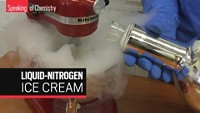Advertisement
Grab your lab coat. Let's get started
Welcome!
Welcome!
Create an account below to get 6 C&EN articles per month, receive newsletters and more - all free.
It seems this is your first time logging in online. Please enter the following information to continue.
As an ACS member you automatically get access to this site. All we need is few more details to create your reading experience.
Not you? Sign in with a different account.
Not you? Sign in with a different account.
ERROR 1
ERROR 1
ERROR 2
ERROR 2
ERROR 2
ERROR 2
ERROR 2
Password and Confirm password must match.
If you have an ACS member number, please enter it here so we can link this account to your membership. (optional)
ERROR 2
ACS values your privacy. By submitting your information, you are gaining access to C&EN and subscribing to our weekly newsletter. We use the information you provide to make your reading experience better, and we will never sell your data to third party members.
Business
Newscripts
The Highs and Lows of Oxygen
by Carmen Drahl
November 10, 2008
| A version of this story appeared in
Volume 86, Issue 45

Hollywood trendsetters and American Chemical Society national meeting exposition attendees can claim at least one common experience this year. At the New Orleans and Philadelphia meetings, chemists were treated to a complimentary OXYGEN BAR, a contemporary take on the local tavern where, instead of downing beer, patrons pay to sniff scented oxygen through a plastic hose shoved into their nostrils. Oxygen bars have been popping up at nightclubs, spas, and other of-the-moment locales in Los Angeles and nationwide since the late 1990s. Some proprietors claim that the experience helps boost energy, focus, and overall health. Unfortunately, the science behind those statements is about as thin as the air atop Mount Everest.
Ambient air at sea level is about 21% oxygen, and when a healthy person breathes it in, the blood's hemoglobin gets almost completely saturated with oxygen, says Norman H. Edelman, chief medical officer of the American Lung Association. Breathing air with higher oxygen content "isn't going to bring significantly more oxygen to the tissues where it's used," so there isn't going to be any discernable physiological benefit, he adds. The oxygen pumped out of an oxygen bar is made with specialized equipment that filters ambient air to effectively increase its oxygen content.
As for the exotic aromas used to "flavor" the gas, they have no beneficial physiological effects either, and some could even cause damage, as reported in the magazine FDA Consumer. The flavors in an oxygen bar come from bubbling oxygen through bottles containing aromatic solutions before it reaches the nostrils. Most bars use food-grade particles to produce the scent, but some bars use aroma oils instead. Mary Purucker, a pulmonary specialist at FDA's Center for Drug Evaluation & Research, tells FDA Consumer that patrons should avoid bars using aroma oils because inhaling oily substances could lead to a type of lung inflammation called lipoid pneumonia.

Overall, oxygen bars might be a diversion for healthy people, but they "should never be a substitute for medically required oxygen" for patients with medical conditions such as emphysema, Edelman says. Those patients must have their blood oxygen levels carefully regulated and could even stop breathing if they inhale too much oxygen, he says.
Extra oxygen may not do much good, but what about a healthy dose of oxygen deprivation? Living at HIGH ALTITUDE increases production of oxygen-toting red blood cells, which helps a person become more efficient at supplying themselves with oxygen. That adaptation can help athletes perform better, but the trade-off is that athletes can't train as hard as they can at sea level. A highly cited study concluded that a good way to reap the benefits of thin-air living is to train at low altitudes (J. Appl. Physiol. 1997, 83, 102).
Daily treks up and down a mountain aren't feasible for every athlete, so some companies have developed ways to bring the "live high, train low" lifestyle to them. The technology is essentially a hermetically sealed tent that mimics any altitude between sea level and 15,000 feet. Its proponents include the Nike-funded Oregon Project, a training program for elite runners. The Oregon Project has an entire mock-altitude house, but companies such as Colorado Altitude Training sell and rent tents to casual athletes, as well. Newscripts sincerely hopes that this won't lead to doping allegations at local fun runs.
Carmen Drahl wrote this week's column. Please send comments and suggestions to newscripts@acs.org.





Join the conversation
Contact the reporter
Submit a Letter to the Editor for publication
Engage with us on Twitter